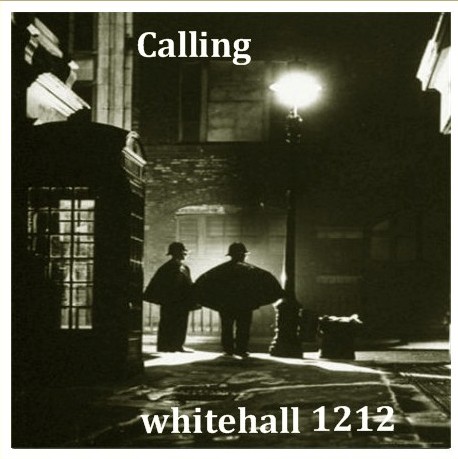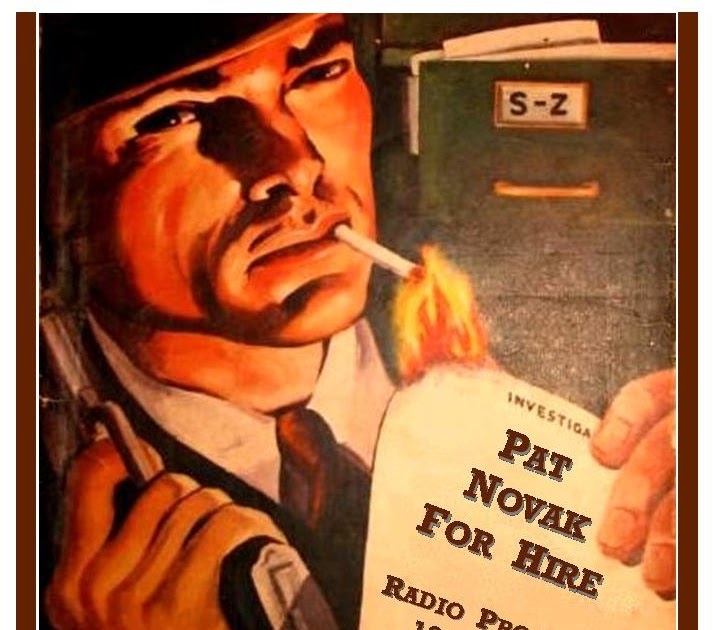 OTRR certified "Whitehall 1212" v2.0 (2 CDs) is available for download from Dropbox or OneDrive. Thanks to all those who made this collection possible.
OTRR certified "Whitehall 1212" v2.0 (2 CDs) is available for download from Dropbox or OneDrive. Thanks to all those who made this collection possible.
These links will be available for 30 days.
Dropbox: https://www.dropbox.com/sh/s9g77tsirfdwfuu/AAAIc5dXYFlo3feOG6uvV_MOa?dl=0
OneDrive: https://1drv.ms/f/s!Al5Sbh6lIkj5jKU7avmjh2vpEX3y1A
Series summary:
Named after the then famous telephone number of Scotland Yard—the headquarters of the London Metropolitan Police Force, Whitehall 1212 was a weekly crime drama radio show. It ran from November 18, 1951 until September 28, 1952.
The stories were true and stated to be “the plain unvarnished facts, just as they occurred”. The show, in their own words, presented some of the "most baffling cases" as hosted by the fictitious Scotland Yard Chief Superintendent John Davison. Davison was said to be the curator of the Yard’s “Black Museum” a name given it in 1877. Artifacts described in the show were the basis for the story about the crime.
Whitehall 1212 was actually produced in the United States at NBC. The stories were well researched by Percy Hoskins, Chief Crime Reporter of the London Daily Express, and by the Writer-Director, Wyllis Cooper. Also, the show had the official support of the Yard. The cast were all British, which gives the show an authentic air and appeal.
The stories are told from the view of the police who did the hard work in solving the case, and thus it down plays some of the more sensational aspects. In comparison, at the same time, Orson Welles was on a show titled The Black Museum. It was a production of British commercial radio producer Harry Alan Towers and told the story in a more dramatic fashion. The two shows closely paralleled each other, and ran during the same timeframe. The Black Museum was run in the United States on the Mutual Network from January 1 to December 30, 1952.
Wyllis Cooper was noteworthy for his work on Quiet Please, and Lights Out. However, working from purely factual basis for the stories limited his artistic expression. Still, the stories were well presented and compelling.
v. 2 Changes
* Upgraded sound to 16 episodes
* Added logs
All Posts (5)
 Andy Griffith is best remembered for Matlock and The Andy Griffith Show. He also had a huge career on Broadway, including musicals. It's not as widely known that he released several albums of spirituals. What's probably least remembered is that he got his start as a stand-up comedian. Here is some comedy entertainment.
Andy Griffith is best remembered for Matlock and The Andy Griffith Show. He also had a huge career on Broadway, including musicals. It's not as widely known that he released several albums of spirituals. What's probably least remembered is that he got his start as a stand-up comedian. Here is some comedy entertainment.
- Andy Griffith - A Man.mp3
- Andy Griffith - Aint It So.mp3
- Andy Griffith - Carmon.mp3
- Andy Griffith - Cleopatra.mp3
- Andy Griffith - Columbus.mp3
- Andy Griffith - Cow, The.mp3
- Andy Griffith - Hamlet.mp3
- Andy Griffith - Romeo And Juliet.mp3
- Andy Griffith - So This Is Football.mp3
- Andy Griffith - White Lightning.mp3
 OTRR certified "Alka-Seltzer Time" v1.1 (1 CD) is available for download from Dropbox or OneDrive. Thanks to all those who made this collection possible.
OTRR certified "Alka-Seltzer Time" v1.1 (1 CD) is available for download from Dropbox or OneDrive. Thanks to all those who made this collection possible.
These links will be available for 30 days.
Dropbox: https://www.dropbox.com/sh/c98oj8tzl2vz7me/AABmrnVFWxa21VxtOkJyQoVRa?dl=0
OneDrive: https://1drv.ms/f/s!Al5Sbh6lIkj5jKJcEtJbpIb7CDLLNQ
Series summary:
Alka-Seltzer Time (aka The Alka-Seltzer Show) was a 15-minute radio series broadcast weekdays on both CBS Radio and the Mutual Broadcasting System. This show should not to be confused with an earlier show called Alka-Seltzer Time that would later be renamed Herb Shriner Time.
The show began in 1949. It stared baritone Curt Massey along with Martha Tilton and had the original title The Curt Massey Show (sometimes advertised as The Curt Massey and Martha Tilton Show). The announcer was Ford Pearson. The show sponsor was Alka-Seltzer. The name was changed in 1952 to highlight the sponsor's product.
By 1953, the series was heard on Mutual (at 12 noon, Eastern Time) and later that same day on CBS (at 5:45pm, ET). Advertisements described the show as "informal song sessions" by vocalists Massey and Tilton. Tilton was often billed as "the liltin' Martha Tilton". The two singers, both Texas-born, performed with Country Washburne and His Orchestra, featuring Charles LaVere on piano.
Songs included such tunes as "Honey, I'm in Love with You", "A Gambler's Guitar", "Just to Be with You", "Moonlight", "When Love Goes Wrong", "Choo Choo Train", "I've Got Spurs that Jingle Jangle Jingle", "Put on a Bonnet", "On the Sunny Side of the Street", "Papaya Mama" and "Istanbul, Not Constantinople". There were some theme shows, such as "Go West", music from "Old Phonograph Records" and "Salute to Hawaii".
Massey and Tilton would continue to appear together during the late 1950s on such shows as Guest Star and Stars for Defense. They also teamed up to record an album, We Sing the Old Songs (1957). CD collections of Alka-Seltzer Time usually identify shows by the first performed song of each program. Today, Massey is best remembered as the composer (with Paul Henning) and singer of the Petticoat Junction TV show theme song.
V. 1.1 changes
* replaced 53-10-19 (x) First Song - Moonlight When Shadows Fall
* fixed date of 53-11-06 show
* updated artwork
* Added Certification Documents, Series Synopsis, Pictures
* Added dash to Alka-Seltzer in file names
 OTRR certified "Pat Novak for Hire" v1.0 (1 CD) is available for download from Dropbox or OneDrive. Thanks to all those who made this collection possible.
OTRR certified "Pat Novak for Hire" v1.0 (1 CD) is available for download from Dropbox or OneDrive. Thanks to all those who made this collection possible.
These links will be available for 30 days.
Dropbox: https://www.dropbox.com/sh/meuvya21ol88eyo/AACAaWgQoaw31bB1b-C5Jp9Aa?dl=0
OneDrive: https://1drv.ms/f/s!Al5Sbh6lIkj5jKJdc895Y4Mu4H7WRA
Series summary:
Pat Novak, for Hire, is an old-time radio detective drama series which originally aired from 1946-1948, and revived in 1949. It started as a West Coast regional produced at KGO in San Francisco program. This regional version originally starred Jack Webb in the title role, with scripts by his roommate Richard L. Breen. When Webb and Breen moved from San Francisco to Los Angeles, Webb was replaced by Ben Morris, and Breen by Gil Doud. Meanwhile in LA, Webb and Breen, joined by Director William P. Rousseau, would work on an extremely similar nationwide series, Johnny Madero, Pier 23, for the Mutual network. Webb would then star in Jeff Regan, Investigator until December, 1948. By 1949, a year after the end of the San Francisco run, Jack Webb resumed the Novak role, and Breen his duties as scriptwriter, this time for a national audience on ABC.
Pat Novak, for Hire is set on the San Francisco, California waterfront and depicts the city Pat Novak knows it - a dark, rough place where the main goal is survival. Pat Novak is not a detective by trade. He owns a boat shop on Pier 19 where he rents out boats and does odd jobs to make money.
 OTRR certified "Words at War" v1.0 (3 CDs) is available for download from Dropbox or OneDrive. Thanks to all those who made this collection possible.
OTRR certified "Words at War" v1.0 (3 CDs) is available for download from Dropbox or OneDrive. Thanks to all those who made this collection possible.
These links will be available for 30 days.
Dropbox: https://www.dropbox.com/sh/62tci8l6dqpq2ol/AACPFiLVF7V3af6pAFp3qEXda?dl=0
OneDrive: https://1drv.ms/f/s!Al5Sbh6lIkj5jKI6TsJqRjl2C1RdMw
Series summary:
Words at War (by Jimbo)
Words at War was a 30 minute dramatic anthology series dealing with stories condensed from books written about World War II. The series started in the middle of the war and at the most crucial time of the war for the allies, somewhat heightening it's debut. Not only that, it was supported by Johnson's Wax in the Fibber McGee and Molly time slot as Jim and Marian Jordan went on vacation. And if that wasn't enough, the music for the series was done by NBC's own Frank Black, a master at orchestration and the shows were often directed by Anton M. Leder of Suspense fame. Adding to all of that is the fact that most all - if not all - of the series is available today for our listening pleasure and the sound is above average.
Done in a docu-drama style with Black's music as the background gave often stark, sobering realism to these stories penned by different authors. While not all of the shows are winners, many are far above average and many remind me of the writing of Arch Oboloer. Not that these plays are anti-war (just the opposite) but most of these stories pack a powerful, though-provoking wallop, especially when dealing with subjects that are hard to comprehend, like the taking of innocent civilian lives. As Billboard Magazine wrote in 1943, "Muddled, cloying ideas of war romantics were washed away in a clean sweep." No truer words can be spoken about some of these dramas.
With anthologies you often have some good and some bad because each author has his own strengths and weaknesses. However, all seem to have a quality worthy of this fine radio series.
Recent
